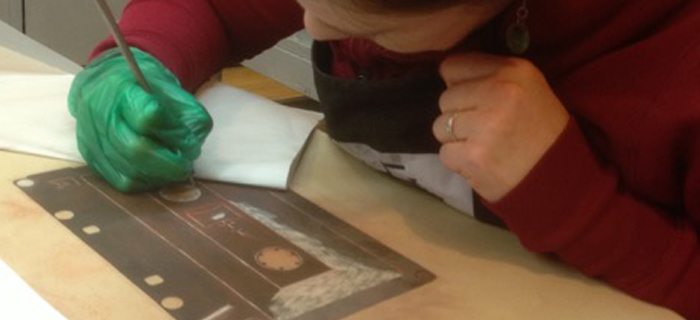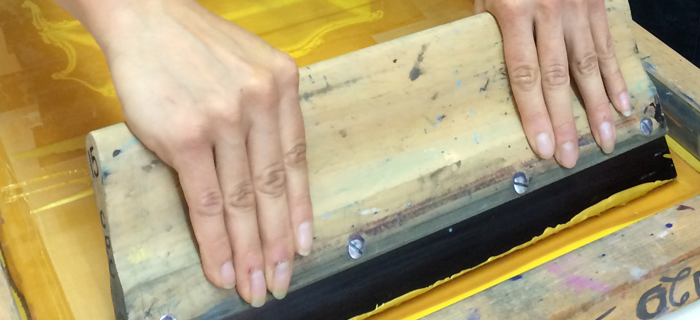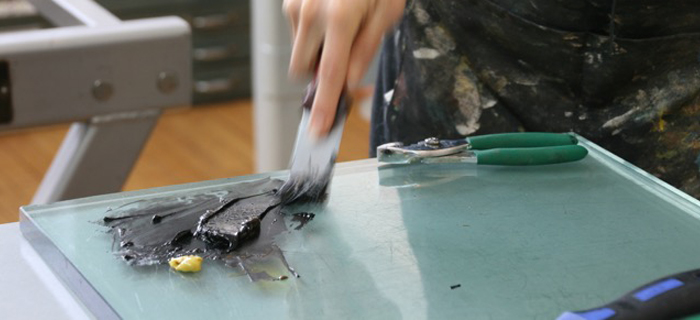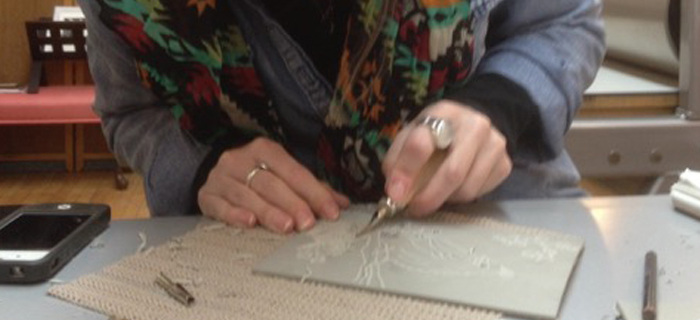Processes at Chicago Printmakers Collaborative
The CPC provides equipment, facilities and classes for the production of work in the mediums of etching, relief, lithography, monotype, letterpress, screen printing, and book arts. Here are a few definitions to refresh your INKucation:
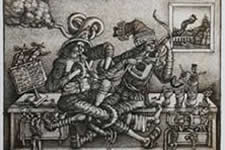
Etching
In traditional etching, a metal plate is coated with a substance that resists acid (known as a “ground”). The artist creates the image by removing areas of the ground to expose the metal. The plate is placed in acid until the exposed areas are sufficiently etched to produce indentations or grooves that will hold the ink. The ground is then removed, and the plate is ready to be inked and printed. (This differs from drypoint etching, where a tool is used to scrape away the metal.) The various processes of etching– sugar lift, aquatint, white ground– are all different means of controlling the speed and manner in which the acid etches the plate.
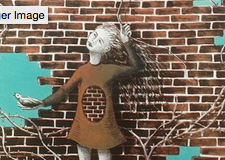
Lithography
Imagery is drawn on a stone or aluminum plate with greasy materials (such as special crayons or ink) or toner (for plate lithography). The basic principle of lithography is that water and grease don’t mix. After chemically preparing the plate so that the image areas accept grease and repel water, the plate or stone is alternately sponged with water and rolled with ink, ensuring that the ink only sticks to the “grease loving” areas, reproducing the image as drawn.
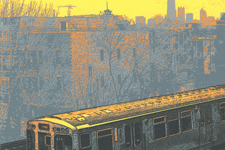
Screenprinting
In screenprinting, silk or synthetic mesh is stretched tightly over a frame. The essential technique is that areas of the screen are blocked out with stencils– these can either be fluids applied to the mesh, paper stencils adhered to the mesh, or photo stencils exposed onto a specially coated surface on the mesh. The image areas are the areas of open fabric through which ink is forced with a squeegee.
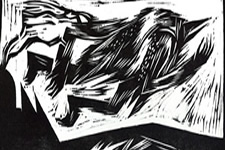
Relief
An image is carved into a surface – typically wood or linoleum – and the remaining raised surface is then inked and printed. The areas which are carved do not print. Other examples include relief etching and relief collograph.
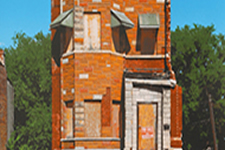
Photo-Etching with Solarplate or Photo-polymer Film
Contemporary non-toxic etching methods using materials from the commercial printing industry. The image is created by laying a transparency with the image on it on top of the photosensitive plate and exposing it to a light source. The light source hardens the areas of the plate where there is no image, while the areas of the plate which were blocked by the image remain soft and can be “washed out.” The photo polymer film can be applied to metal plates and etched in acid, or applied to plastic plates and printed without etching.



